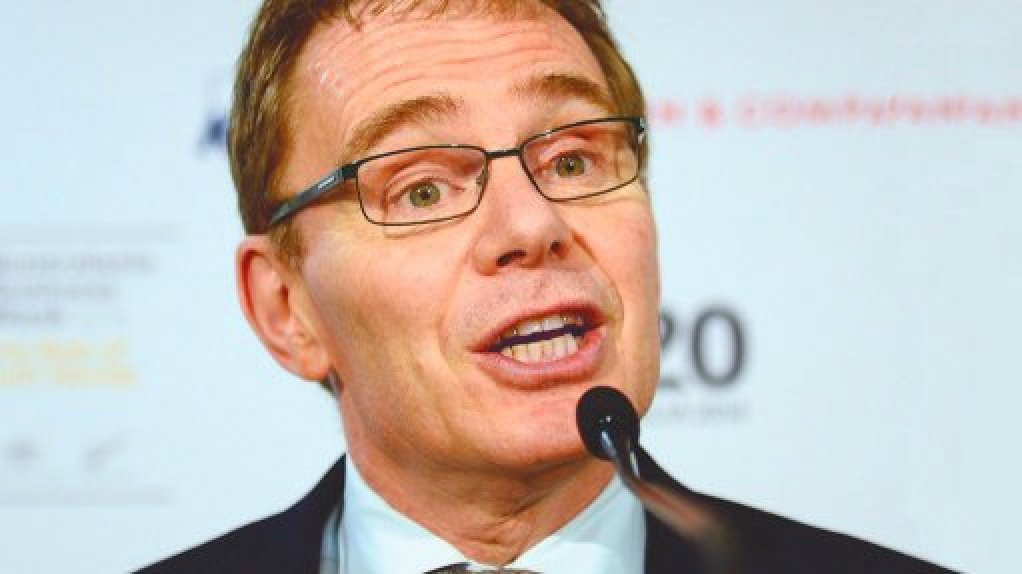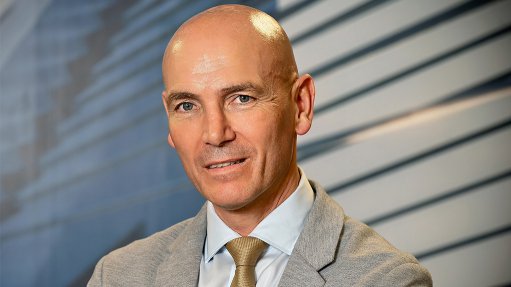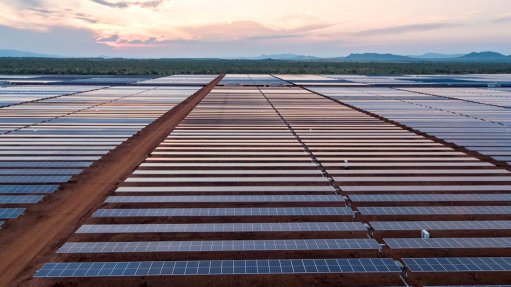Major South African assets fail to make cut in BHP Billiton portfolio remake
JOHANNESBURG (miningweekly.com) – Major South African asset classes have failed to make the cut in BHP Billiton’s latest portfolio remake announcement.
Aluminium and manganese have been excluded by implication in BHP Billison's selection of iron-ore, copper, coal – with coking coal the likely preferred coal type over thermal coal, though not specifically separated – petroleum and, possibly, potash.
Out on a limb with the exclusion of aluminium is the wholly owned and operated Hillside Aluminium smelter in South Africa's KwaZulu-Natal province - which has benefited from below-tariff Eskom electricity over the years - and the partly owned and operated Mozal aluminium smelter in Maputo, Mozambique.
Also failing to make the cut are the Hotazel manganese mines, the Mamatwan opencast mine and the Wessels underground mine in South Africa’s Northern Cape province, which fall under the Samancor Manganese umbrella, in which BHP Billiton has a 60% share and Anglo American the remaining 40% share.
Samancor Manganese also beneficiates 30% of the manganese ore it mines in one of the largest operating furnaces of its kind in the world at the Metalloys smelter in Meyerton.
Khutala, Klipspruit, Middelburg and Wolvekrans collieries, as well as three coal-processing plants, are BHP Billiton’s thermal coal assets in South Africa's Mpumalanga province and may also hang in the balance.
Under its continued petroleum focus, BHP Billiton will presumably retain its petroleum exploration rights off South Africa’s West Coast, where it holds 60% of block 3A/4A and 90% of block 3B/4B.
Its share price rose 3% in Australia on the news of an expected $12-billion asset demerger.
Investec Securities mining analysts noted that BHP Billiton’s manganese, aluminium and nickel assets accounted for 14% revenue in the 2013 financial year but less than 1% of operating income.
Liberum Capital analysts said BHP Billiton had been forced to release a statement on its portfolio simplification after the Australian Financial Review spilt the beans about the intended hiving off of unfavoured assets.
Liberum said London shareholders would not receive shares in the new demerged entity, but would probably be compensated through a buyback mechanism.
Questions remain on BHP Billiton’s standing on thermal coal, from which it has been distancing itself in South Africa.
While the portfolio simplification would create a diversified mining company with the best margins and the largest return on capital employed in the sector over the long-run, Liberum remained unconvinced that it would necessarily be value accretive.
“As we've previously flagged, the aluminium, manganese and nickel divisions have averaged free cash flow of some $105-million a year in the past six years.
“Given that the stock has rallied 3% in Australia overnight, we think the upside is probably baked in,” Liberum added.
BHP Billiton, now under new broom CEO Andrew Mackenzie, has already sold assets worth $5.2-billion.
In South Africa, BHP Billiton communications and external affairs VP Lulu Letlape referred Mining Weekly Online to the company’s media release, which said a conclusion had been reached that a portfolio of iron-ore, copper, coal and petroleum assets would retain the benefits of diversification, generate stronger growth in cash flow and provide a superior return on investment.
The Hillside aluminium smelter, commissioned in 1994, and the Mozal smelter, commissioned in 2001, together employ nearly 6 000 employees and contractors and another 30 000 people are said to indirectly benefit from the supply of goods and services to the smelters.
Over the years, BHP Billiton South Africa, currently headed by executive chairperson Xolani Mkhwanazi, a former Chamber of Mines president, has helped to spawn black-economic empowerment coal companies like Eyesizwe, today Exxaro, and Optimum, now in the Glencore group.
In 2011, BHP Billiton had 130 mines in 25 countries, employed 99 000 people and had a market capitalisation of $177-billion.
Currently, with fewer assets and employees, its market capitalisation is $186-billion.
Comments
Press Office
Announcements
What's On
Subscribe to improve your user experience...
Option 1 (equivalent of R125 a month):
Receive a weekly copy of Creamer Media's Engineering News & Mining Weekly magazine
(print copy for those in South Africa and e-magazine for those outside of South Africa)
Receive daily email newsletters
Access to full search results
Access archive of magazine back copies
Access to Projects in Progress
Access to ONE Research Report of your choice in PDF format
Option 2 (equivalent of R375 a month):
All benefits from Option 1
PLUS
Access to Creamer Media's Research Channel Africa for ALL Research Reports, in PDF format, on various industrial and mining sectors
including Electricity; Water; Energy Transition; Hydrogen; Roads, Rail and Ports; Coal; Gold; Platinum; Battery Metals; etc.
Already a subscriber?
Forgotten your password?
Receive weekly copy of Creamer Media's Engineering News & Mining Weekly magazine (print copy for those in South Africa and e-magazine for those outside of South Africa)
➕
Recieve daily email newsletters
➕
Access to full search results
➕
Access archive of magazine back copies
➕
Access to Projects in Progress
➕
Access to ONE Research Report of your choice in PDF format
RESEARCH CHANNEL AFRICA
R4500 (equivalent of R375 a month)
SUBSCRIBEAll benefits from Option 1
➕
Access to Creamer Media's Research Channel Africa for ALL Research Reports on various industrial and mining sectors, in PDF format, including on:
Electricity
➕
Water
➕
Energy Transition
➕
Hydrogen
➕
Roads, Rail and Ports
➕
Coal
➕
Gold
➕
Platinum
➕
Battery Metals
➕
etc.
Receive all benefits from Option 1 or Option 2 delivered to numerous people at your company
➕
Multiple User names and Passwords for simultaneous log-ins
➕
Intranet integration access to all in your organisation





















